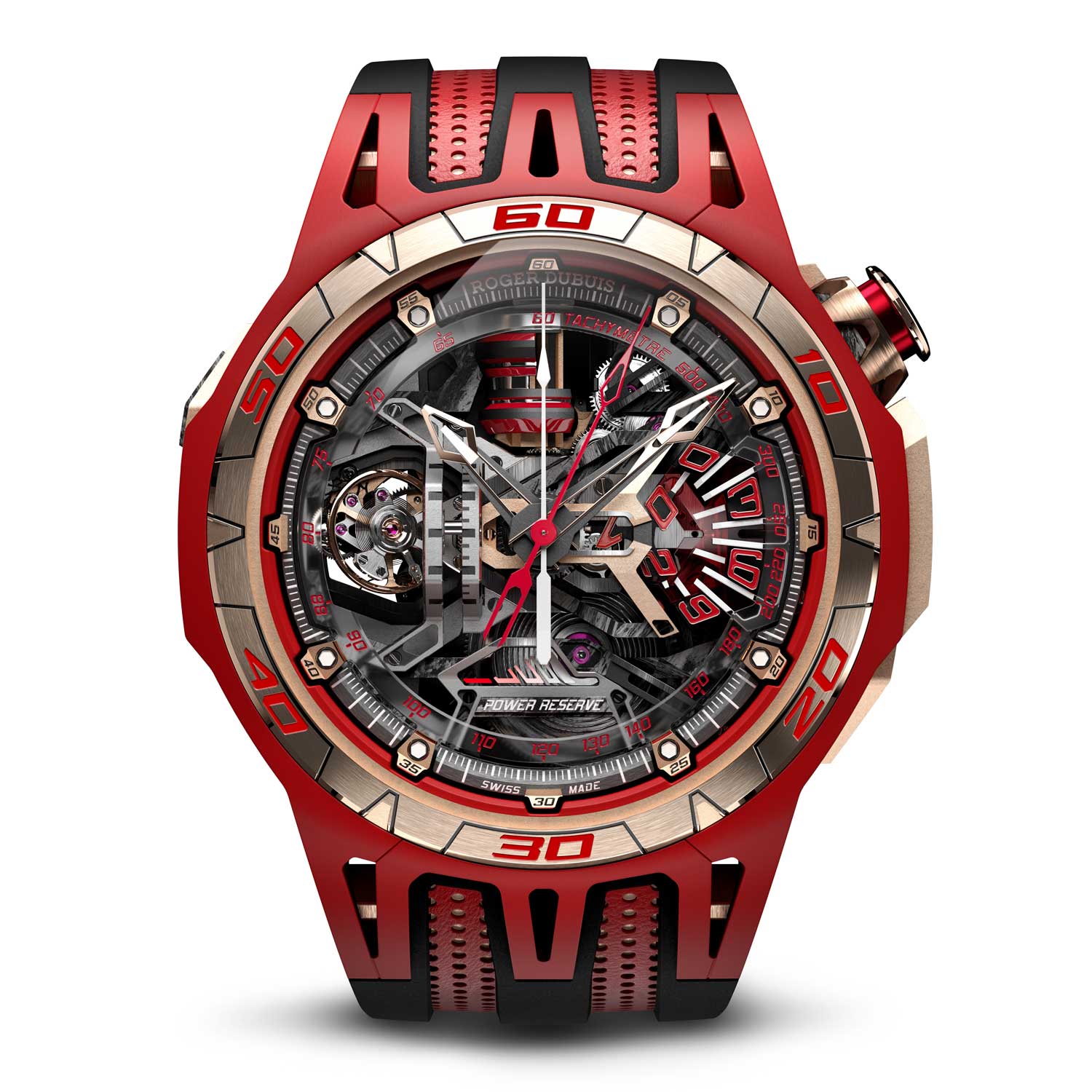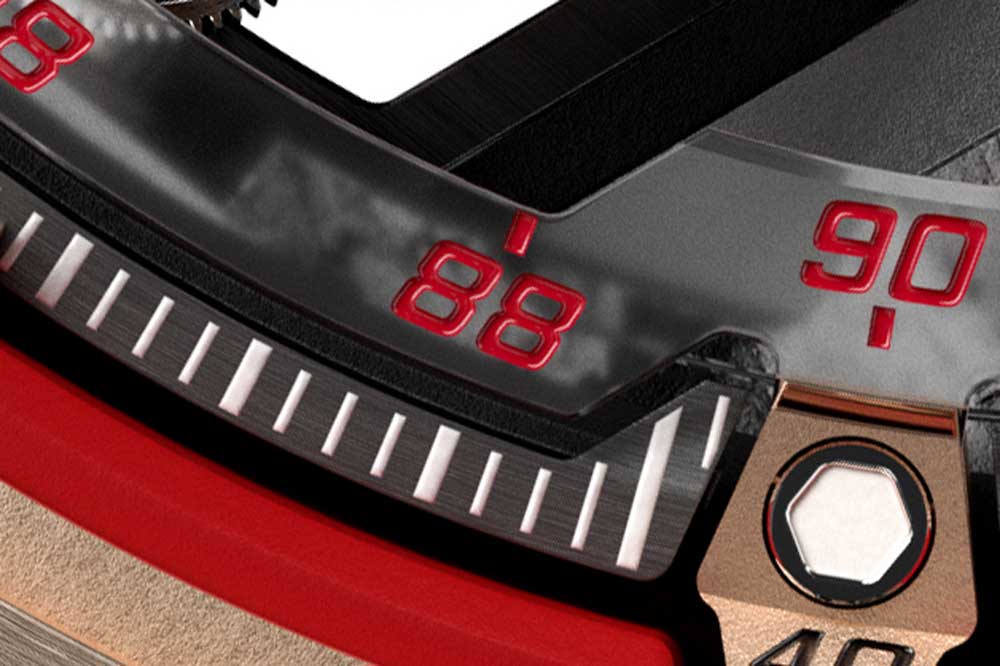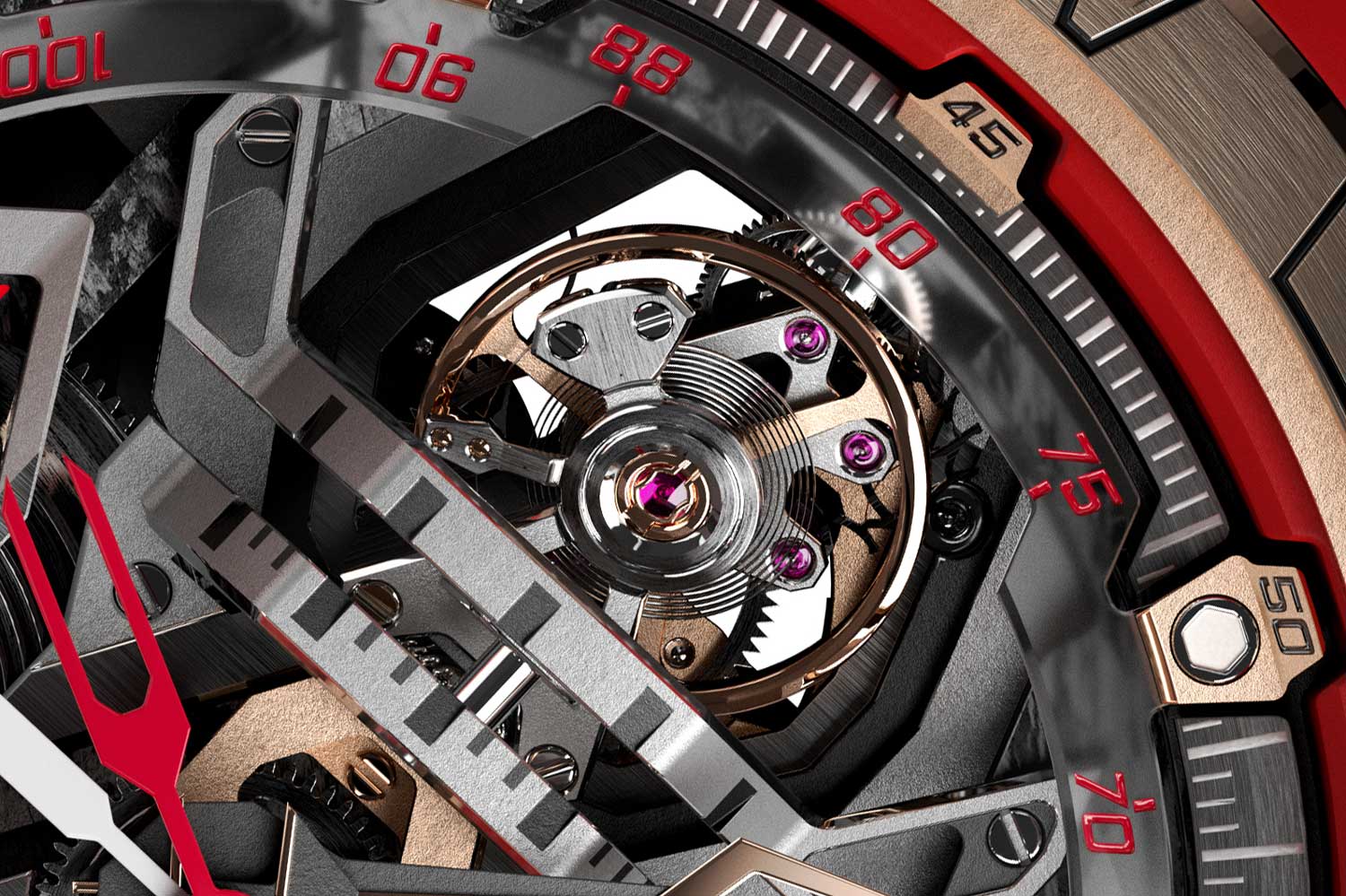News
Introducing the Roger Dubuis Monovortex Split Seconds Chronograph
If you like watches that tell time in unusual ways, you’ll love the Roger Dubuis Monovortex Split Seconds Chronograph. Its the new torchbearer of Roger Dubuis’ radical approach to watchmaking, which the manufacture has coined ‘Hyper Horology,’ and epitomizes the manufacture’s insatiable appetite for venturing into uncharted horological waters.
What exactly is ‘Hyper Horology’? The same way the late Monsieur Roger Dubuis pursued technical innovation through his creations like the Sympathie and Hommage, his eponymous brand continues to push the envelope under the banner of Hyper Horology, which it has trademarked. Unlike brands that rally behind a banner of historical milestones and reissues, Roger Dubuis CEO Nicola Andreatta is no nostalgist. He shared with me that he has no intention of reviving classic models or harping on the past. His eyes are fixed on the unlimited possibilities of Hyper Horology and his work is dedicated to forward-thinking collectors who desire to live life to the fullest.

At Watches & Wonders 2023, Roger Dubuis debuted the Monovortex Split Seconds Chronograph, which from first look is obviously not your grandpa’s split seconds chronograph. I dare say that the intricate architecture of this novelty and the incredible attention paid to its detailed finishings, easily make it one of the most visually absorbing timepieces of this fair.
I’ll attempt to expound on this hyper-technical chronograph. The Monovortex Split Seconds Chronograph has a central minute and a central hour hand, along with two central split-seconds chronograph hands. Everything is normal… up till here. Here’s where the record needle drops.

Roger Dubuis Monovortex Split Seconds Chronograph
In simple terms: This three-hand satellite’s hands bear the number 0, 1 and 2. As the chronograph minutes elapse, this satellite indicating the minute will rotate. It doesn’t rotate in planar fashion though. Picture a piece of luggage that rises out of a hole and up onto a conveyor belt for you to see, before receding back down into a hole. The hand that you need to pay attention to, among these three hands, will rise above the other two, and point to an index on the 0-3-6-9 sector. For example, if 15 minutes have elapsed for the chronograph function, then the ‘1’ hand of the tripartite satellite will rise (indicating that the chronograph minutes elapsed is ‘1?’) and point to the second index after the ‘3’ on the 0-3-6-9 section (3 + 2 indexes; indicating that the chronograph minutes elapsed is ‘?5’).
While admiring this absorbing complication, which Roger Dubuis has already filed for a pending patent, you will also notice that the number 88 on the tachymeter scale is highlighted, because it was Monsieur Roger Dubuis’ lucky number.

88, Monsieur Roger Dubuis’ lucky number
Next, its Conical Monovortex Tourbillon has a 360° conical trajectory, which means unlike other tourbillon or double tourbillon watches that can compensate for the effects of gravity on one or two axes, the Monovortex Split Seconds Tourbillon negates gravity on all axes. The same way spinning the wheels of a bicycle you’re riding will keep you from falling sideways, constantly moving this tourbillon around on a 360° trajectory nullifies the effect of gravity in all directions.

Conical Monovortex Tourbillon has a 360° conical trajectory
Its 47mm is made of tough but lightweight Mineral Composite Fiber, which is engineered from 99.95% silica and made using a Sheet Molding Compound process.
MCF is particularly sturdy while being 13 per cent lighter than SMC Carbon. This perfect example of Hyper Horology is secured to the wrist by a bi-material strap equipped with Roger Dubuis’ signature quick release system.
Since its founding in 1995, the manufacture has filed numerous patents, made all big four complications (in under a decade, to boot) and created 23 mechanical calibers. The new Roger Dubuis Monovortex Split Seconds Chronograph is a good indication that the brand’s desire to invent has not wavered.










